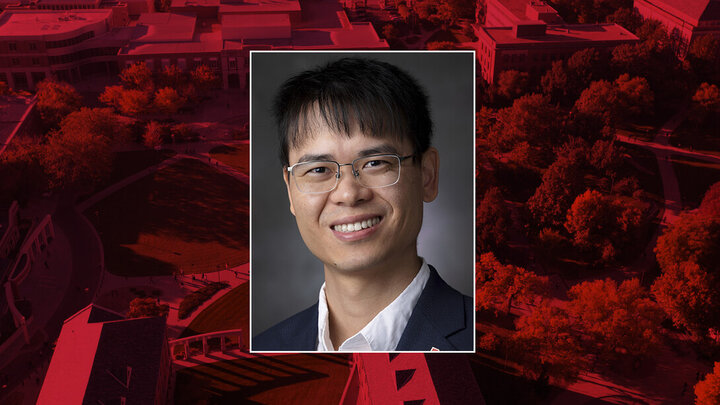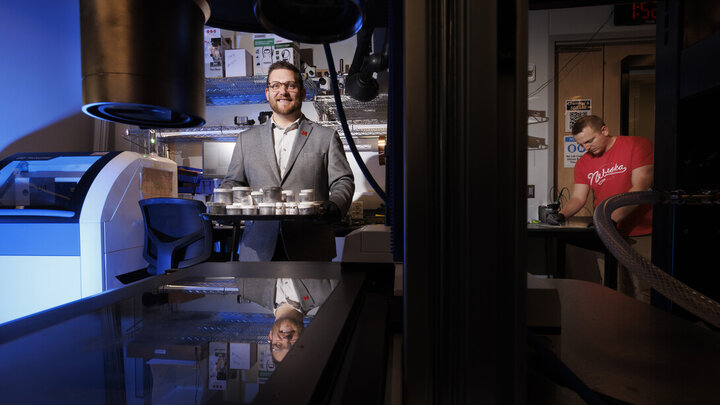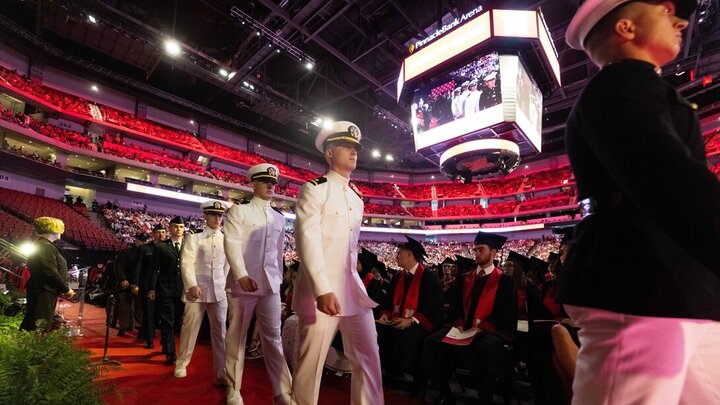Autonomous vehicles have the potential to revolutionize the way we travel, and a new University of Nebraska–Lincoln research project has the potential to revolutionize the way autonomous vehicles operate.
With support from the National Science Foundation, School of Computing Assistant Professor Qiang Liu will collaborate with Professor Weisong Shi of the University of Delaware on a new project that will advance this field of technology through the new concept of connected autonomous driving.
Current autonomous vehicle models use sensors, hardware, and AI-based software to perceive and react to their surrounding environments. Because the software and hardware in these vehicles are typically tightly tied together, upgradability options for drivers are very limited. Liu’s project proposes an upgradability solution through access to a broader network of devices and shared information.
“We’re trying to address this issue and improve the safety of autonomous driving by connecting the infrastructures,” Liu said. “If we can allow the vehicles to communicate and provide a more global view, that will improve the robustness and eventually improve the safety."
Liu’s proposal would enable adaptive collaboration on the network, allowing devices to obtain and distribute the latest data in real-time. Vehicles could seamlessly integrate available information from proximate vehicles and roadside structures into the autonomous driving software, immediately improving perception, prediction, and planning.
Liu said because various external and environmental factors can impact the capabilities of cameras and sensors, additional devices outside the vehicle can provide a more holistic scope, substantially improving driving performance and safety.
“Each sensor is like one snapshot of the environment, and each is limited in terms of range and accuracy,” Liu said. “You cannot rely on only the camera to do the autonomous driving because of the light, weather, fog, mud, or maybe a truck occluding the camera. If you have cameras at the intersection that have a different angle of the environment, it can provide more information.”
Liu said reliable connection and real-time transmission of information are vital in an autonomous vehicle network, since even an extremely short delay could make the difference in causing or preventing an accident.
“Wireless technology is not predictable,” Liu said. “Generally, it’s OK for a smartphone and downloading videos, but it’s far from sufficient to support this very time-sensitive communication between vehicles.”
The network will instead run on a more reliable and large-scale 5G network, providing more stability and predictability to both users and developers. Liu and the team will test architecture models through his ongoing project, Husker-Net, the University of Nebraska–Lincoln’s own private 5G network. The research team will also deploy and test models in the University of Delaware’s D-STAR, a digital autonomous vehicle testbed.
Not only will this project pioneer a prototype for connected autonomous driving, but it could also potentially launch another innovative concept: connected autonomous driving as a service (CADaaS). CADaaS would offer users an opportunity to join the network and take advantage of its elevated technology for a regular fee.
“A subscription model would be our future goal,” Liu said. "We do the computation and provide additional capability of autonomous driving for users as long as they have a 5G connection and are connected with our systems. Then users could enjoy a better service of autonomous driving without replacing the car.”
Liu said that while autonomous vehicles are more ubiquitous in some parts of the world, safety concerns continue to limit their presence in others, including the United States. However, a project and network that significantly improved their safety could also increase their popularity.
“The key thing is that we have a convergence between the communications and the computing,” Liu said. “Rather than working individually on a single vehicle, we’re connecting them, and we’re testing how that will work in the real-world with real vehicles and a full-size network. It will be quite unique in the United States.”



